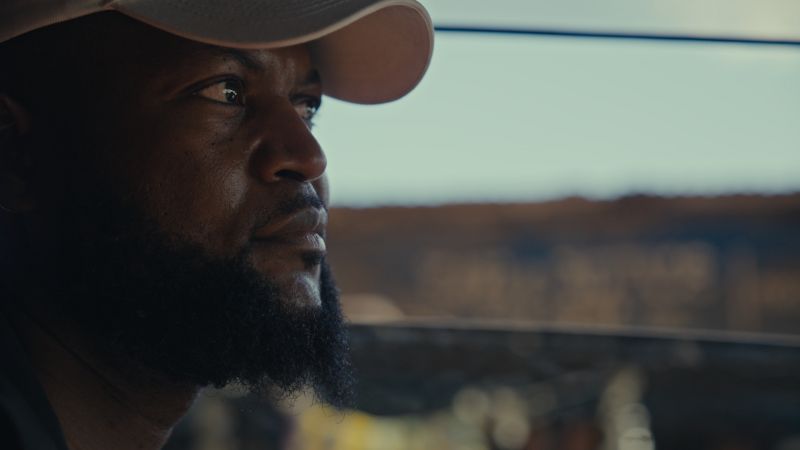LAB1: Take It Back
LAB1: Take It Back
In einer Zeit globaler Umbrüche lenkt Take It Back den Blick auf Geschichten aus dem Sudan, Kongo, Äthiopien und Ghana. Im Mittelpunkt stehen Formen des Widerstands, kollektive Erinnerung und der Prozess der Heilung. Geschichte wird nicht nur erinnert, sondern aktiv zurückgeholt – durch persönliche Narrative und durch die Forderung nach Rückgabe kolonialer Kulturgüter. Restitution ist dabei mehr als die Rückgabe von Objekten – sie ist ein Schritt zur Wiederherstellung von Gerechtigkeit, zur Rückverbindung mit Herkunft und Identität.
Kuratiert von Eythar Gubara
Gast: Nils Kasiske
At a time of global upheaval, Take It Back focuses on stories from Sudan, Congo, Ethiopia and Ghana. The focus is on forms of resistance, collective memory and the process of healing. History is not only remembered, but actively reclaimed - through personal narratives and by demanding the return of colonial cultural assets. Restitution is more than the return of objects - it is a step towards restoring justice, reconnecting with origin and identity.
Curated by Eythar Gubara
Guest: Nils Kasiske
 Sabren
Sabren
Sudan 2025 | Farbe |
15:17 | Arabisch, Englisch
 Sabren
Sabren
Sudan 2025 | Color |
15:17 | Arabic, English
Sabren fängt die Kämpfe der sudanesischen Revolutionäre nach dem Putsch im Oktober 2021 ein – ein Wendepunkt, der die Fortschritte der Revolution zum Stillstand brachte und zum derzeitigen verheerenden Krieg führte. Der von sudanesischen Aktivist:innen und Künstler:innen realisierte Film wurde über einen Zeitraum von drei Jahren (2021-2023) gedreht, darunter auch wenige Wochen vor Kriegsbeginn, und zeigt das Leben im Sudan während dieser turbulenten Zeit zwischen friedlichem Alltag, Protesten und Widerstand, insbesondere während des Ramadan und Bayram. Sabren beleuchtet die übersehenen Ursachen des Krieges, stellt das Narrativ eines »Bürgerkriegs« in Frage und legt die tieferen kapitalistischen und kolonialen Kräfte offen.
Sabren captures the struggles of Sudanese revolutionaries after the October 2021 coup – a turning point that halted the revolution's progress and led to the current devastating war. Filmed over three years (2021-2023), including just weeks before the war began, it portrays life in Sudan during that turbulent time, blending scenes of peaceful daily life, protests, and resistance, especially during Ramadan and Bayram. Created by Sudanese activists and artists, the film sheds light on the overlooked causes of the war, challenging the narrative of a »civil war« and exposing deeper capitalist and colonial forces.
Teilen
Regie, Script, Kamera, Editing, Ton:
Director, Script, Director of photography, Editing, Sound design:
Eythar Gubara
Music, Ton:
Music, Sound design:
Uncle Salah
202 (2023), not just a shadow (2022), let me be (2021)
 The Story of Ne Kuko
The Story of Ne Kuko
Niederlande 2023 | Farbe |
25:00 | Lingala, Französisch, Kikongo
 The Story of Ne Kuko
The Story of Ne Kuko
Netherlands 2023 | Color |
25:00 | Lingala, French, Kikongo
Die Geschichte, wie die kraftvolle Statue von Chief Ne Kuko gestohlen wurde, sollte nicht in Vergessenheit geraten. Das auch als Nkisi Nkonde Statue bekannte holzgeschnitzte Artefakt steht, gefangen hinter Glas, in einem europäischen Museum. Die Erzählung dahinter verbindet den Restitutionsaktivisten Mwazulu Diyabanza mit dem kleinen Dorf Kikuku in den Bergen von Boma in der Demokratischen Republik Kongo.
The story of how the power statue of Chief Ne Kuko was stolen should not be forgotten. This nkisi stands, trapped behind glass, in a European museum. The history behind this mysterious statue connects restitution activist Mwazulu Diyabanza to the small village of Kikuku in the mountains of Boma, Democratic Republic of Congo.
Teilen
Sales:
Sales:
First Hand Films
Regie, Kamera, Editing:
Director, Director of photography, Editing:
Festus Toll
Ton:
Sound design:
Vincent Sinceretti
Produzent:in:
Producer:
Janneke Doolaard
Produzent:in:
Producer:
Harmen Jalvingh
When You Hear the Divine Call (2020/2022), We will maintain (2017), NAÏVE COMPUTER JAZZ (2016)
 You Hide Me
You Hide Me
Ghana 1970 | Schwarz-Weiss |
16:00 | Englisch
 You Hide Me
You Hide Me
Ghana 1970 | Black & White |
16:00 | English
Der ghanaische Filmemacher Nii Kwate Owoo verschaffte sich 1970 Zugang zu den unterirdischen Depots des British Museum und filmte die wertvollen afrikanischen Artefakte, die im Keller verstaut waren. Mit einer gekonnten Mischung aus Geschick und Wagemut gelang es Owoo, die Museumsleitung und das gesamte Sicherheitssystem auszutricksen und Zugang in die geheimen unterirdischen Lagerräume zu erhalten. Ein Tag reichte aus, um diesen Kurzfilm zu drehen, der das Ausmaß des Diebstahls afrikanischer Artefakte, die in Plastiktüten und Holzkisten verstaut waren, aufzeigt und sich für deren Restitution einsetzt. (Arsenal – Institut für Film und Videokunst)
In 1970, Ghanaian filmmaker Nii Kwate Owoo gained access to the British Museum’s underground deposits and filmed the valuable African artifacts stowed away in the basement. Through a shrewd mix of skill and audacity, Owoo managed to outsmart the museum’s directors and its entire security system to gain access to the secret underground vaults. One day sufficed to shoot this short film revealing the extent of the theft of African artifacts, stashed in plastic bags and wooden crates—and to make a case for their restitution. (Arsenal – Institut für Film und Videokunst)
Teilen
Regie, Script:
Director, Script:
Nii Kwate Owoo
Verleihfirma:
Distributor:
gk@arsenal-berlin.de
(Selection) You Can’t Hide Me – The Return of the Looted and Stolen Artefacts in the British and the Fowler Museum in the US (2024), Women of Substance (2002), Music and Vision: Kwabena Nketia (1998), Ouaga: African Cinema Now! (1988), The Struggle for a Free Zimbabwe (1974)



